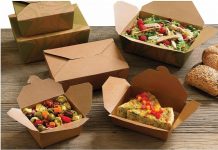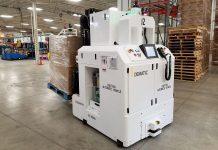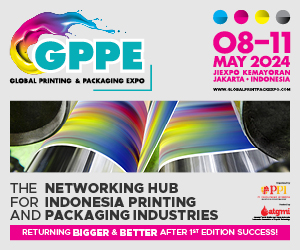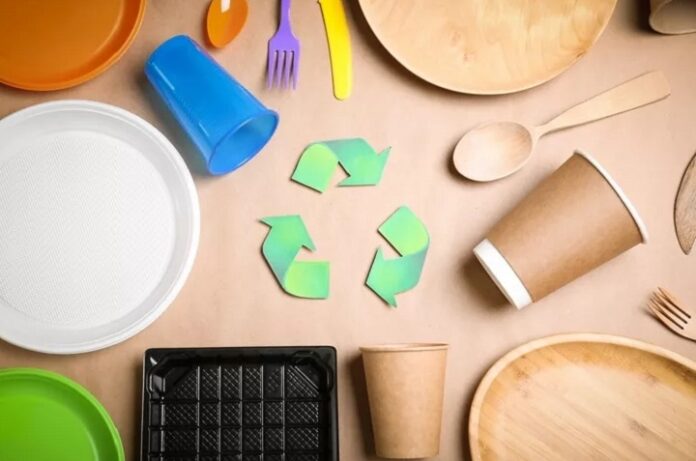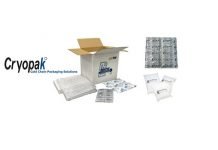The year is 2022, and the COVID-19 outbreak has had a significant impact on a variety of businesses. Consumers, on the other hand, are increasingly looking for food packaging that distinguishes out and presents a unique value proposition in an increasingly monotonous environment. For brands to get their teeth into this year, there are a wide selection of trends that are sweeping the industry.
Investing in packaging which has a wow factor to satisfy consumer appetites, is the idea. Keep the competitive edge by integrating food packaging to brand values, pushing boundaries of innovation, and providing a really unique customer experience that adds a little thrill to the customers’ daily life must be the track to follow.
Make a positive first impression on clients with a food product by using good packaging, and by doing so, let us keep up with the latest food packaging trends in 2022.
Sustainable Packaging
The global green movement has been driven by increased understanding and information of the climate change issue.
As a result, in 2022, it is expected that ecological packaging will remain popular. Regardless of the worldwide epidemic, how brands package their food items should be a top priority for aiding the green agenda. Brands should think about the sorts of packaging they use for their food goods and how they may lower their carbon footprint.
When engaging with a packaging supplier, they should inquire about the origins of the packaging materials. Was the process repeatable? Consumers who care about the environment want to engage with brands that share their beliefs and are prepared to pay a premium to do just that. As a result, marketers must explore how they may employ plastic-free and biodegradable packaging to attract their target clients while ensuring that the packaging is functional and that the customer experience is preserved. Products wrapped in cardboard catering cartons, cardboard food wrappers, and custom food service papers are examples of eco-friendly food packaging choices. In the future, as a result of the quest for sustainability and zero waste, edible food packaging may be introduced. Rice paper, seaweed, or even cornstarch could be used for these edible packaging choices.
Smart Packaging
The interaction of tech and packaging is becoming increasingly important in the era of smart devices. Consumers can engage with their packaging in ways other than merely opening it to get to their food with “smart packaging.” QR codes, social media interactivity, online games, and other technological components on packaging, can thrill consumers and enhance the impression of the business. Smart packaging is incredibly appealing to the market right now, especially at a time when it appears like our only actual interactions are through a computer or phone screen.
Through a simple click or scan on a smartphone, these aspects may be significant tools for educating buyers about the items. Consider allowing buyers to scan a code on packaging to be sent to a landing page with further data about the food product. Another application for smart packaging is to assist firms in tracking metrics like pH, temperature, and so on, especially at a time when we must be cautious when engaging with items in stores. This helps to guarantee food product quality, freshness, and shelf life while avoiding the transmission of COVID-19.
Sensors on food packaging, for example, can monitor quality, with the label changing colours based on whether the product is ruined or safe to eat. As technology keeps taking over, customer expectations for technological integration will rise. To maintain a competitive edge and match consumer demand, brands will need to stay up with trends.
Customized Packaging
Consumers are drawn to things that may be customised in a variety of ways. Personal touches on packaging, such as names or notes, can make the customer feel special and increase their brand experience. Customers want to engage with brands in a genuine way. So, what smarter method to do it than to speak directly to your customers? Personalized packaging has shown to be successful for elevated food and beverage brands. Customers are drawn to communication, even if it’s through the packaging, especially in the midst of a pandemic that restricts their personal encounters.
As consumers demand greater personalization and connections with brands, this emerging trend is becoming industry standard. “Share a Coke” campaign generated a lot of excitement and increased sales. Customers may customise their Coca-Cola bottles by writing the details of the person with whom they would have a drink. The packaging spoke directly to a person with that name, giving them a totally personalised experience.
According to research, personalisation in marketing can increase income by up to 15%. Customers will be seeking for more in saturated sectors than just conventional branding on their package, such as colours, font, and other branding features. Consumers desire to have a stronger relationship with the brands from whom they buy things. Brand storytelling has become increasingly important in attracting customers and fostering brand loyalty.
Packaging that can elicit pleasant sentiments and sentiment from customers is appealing and, depending on the business, tends to gain more attention. Food packaging that matches a customer’s lifestyle and dietary preferences is highly tempting. Customize the look of your food packaging to tell a compelling story that reflects the quality of your target audience. When a consumer experiences with a product, one gets the opportunity to express the brand’s vision and philosophy, and that they have the chance to connect themselves with the items. This is especially critical if the food product is sold online and the customers are unable to inspect the package before purchasing.
A strong brand story may deliver an engaging experience for the customer without having to touch or feel the packaging. Whether one sells the food product offline or online, figuring out how to express the brand story on the packaging will be critical to attracting buyers.
Transparent Packaging
Another big trend this year is transparent food packaging. The demand for more openness from businesses has grown as people become increasingly concerned about the components used in food goods and the method by which they are created.
This entails letting clients to consume with their eyes by allowing them to view the food they’re buying and informing them about the components and advantages. A brand can lead with honesty by revealing what’s inside the container. Customers may be misled or the product may be misrepresented with food photos on the package, which can ruin the relationship with individuals who buy the goods. Customers will have less guesswork if one shows them exactly what they’ll get using straightforward and forthright information that conveys the value of the goods rather than opaque packaging. Customers are turning to another aspect of translucent packaging which is labelling. Consumers frequently feel compelled to study the tiny print to ensure that corporations are not concealing information such as potentially dangerous substances. Instead, embracing clear and straightforward labelling to increase consumer trust in your brand should be the way forward. In a world that has become so repetitive, taking these trends into account might help the business stand out to consumers.
Food packaging has become a very crucial feature in 2021, with grocery stores as one of the only vital enterprises that customers can visit.Experiment with different food packaging styles to find the appropriate fit for the product, and the food product will fly off the shelves in no time.









